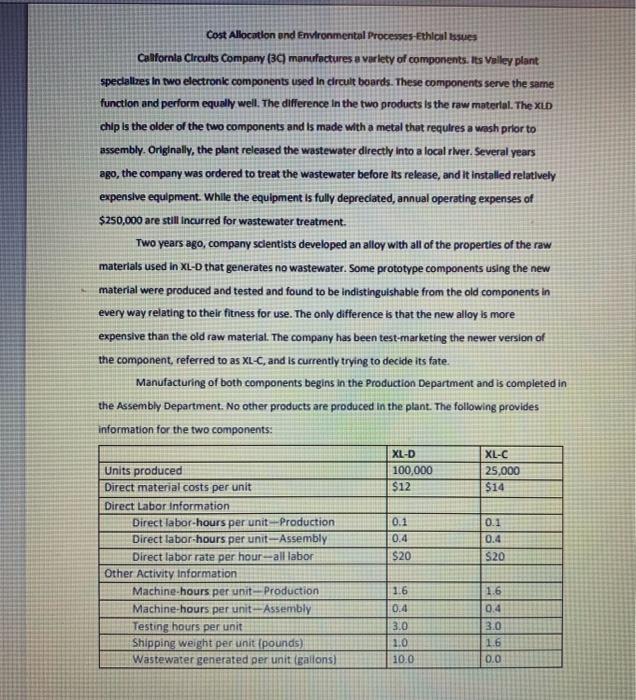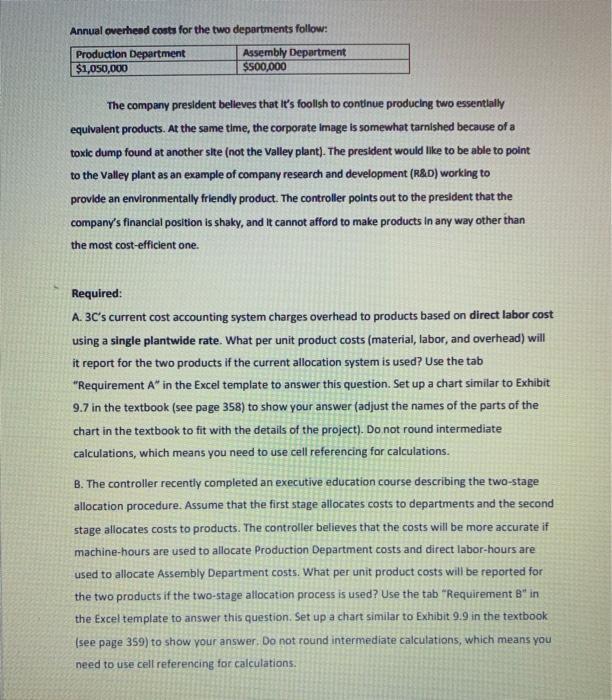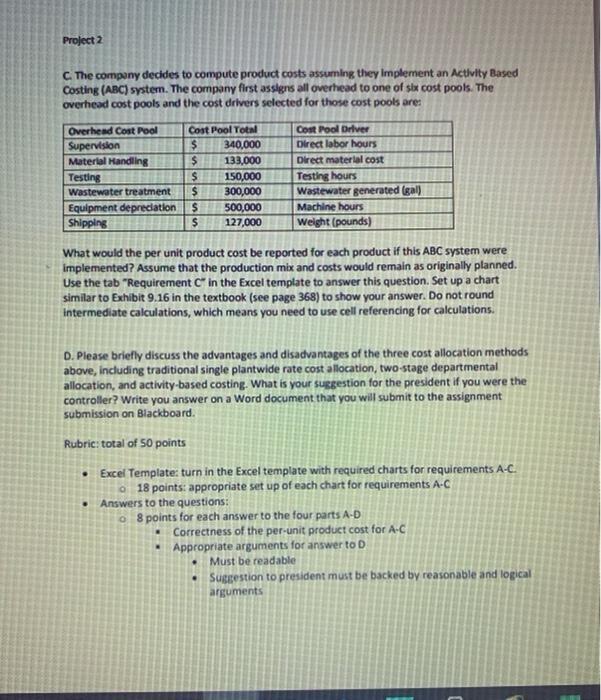Question: Cost Allocatlon end Environmental Processes-Ethical tssues Calfornla Circults Company (3C) manufactures a varlety of components. Its Valley plant specalizes In two electronic components used



Cost Allocatlon end Environmental Processes-Ethical tssues Calfornla Circults Company (3C) manufactures a varlety of components. Its Valley plant specalizes In two electronic components used in circult boards. These components serve the same function and perform equally well. The difference In the two products is the raw materlal. The XLD chip is the older of the two components and is made with a metal that requires a wash prior to assembly. Originally, the plant released the wastewater directly into a local river. Several years ago, the company was ordered to treat the wastewater before its release, and it installed relatively expensive equipment. Whle the equipment is fully depreciated, annual operating expenses of $250,000 are still incurred for wastewater treatment. Two years ago, company scientists developed an alloy with allof the properties of the raw materials used in XL-D that generates no wastewater. Some prototype components using the new material were produced and tested and found to be indistinguishable from the old components in every way relating to their fitness for use. The only difference is that the new alloy is more expensive than the old raw material. The company has been test-marketing the newer version of the component, referred to as XL-C, and is currently trying to decide its fate. Manufacturing of both components begins in the Production Department and is completed in the Assembly Department. No other products are produced in the plant. The following provides information for the two components: XL-D XL-C Units produced 100,000 $12 25,000 Direct material costs per unit $14 Direct Labor Information Direct labor-hours per unit-Production 0.1 0.1 Direct labor-hours per unit-Assembly 0.4 0.4 Direct labor rate per hour-all labor $20 S20 Other Activity information Machine-hours per unit-Production Machine-hours per unit-Assembly 1.6 1.6 0.4 0.4 Testing hours per unit Shipping weight per unit (pounds) Wastewater generated per unit (gallons) 3.0 3.0 1.0 1.6 10.0 0.0 Annual overheed costs for the two departments follow: Production Department $1,050,000 Assembly Department $500,000 The company president belleves that It's foollsh to continue producing two essentlally equivalent products. At the same time, the corporate image is omewhat tarnished because of a toxic dump found at another site (not the Valley plant). The president would like to be able to point to the Valley plant as an example of company research and development (R&D) working to provide an environmentally friendly product. The controller points out to the president that the company's financial position is shaky, and It cannot afford to make products in any way other than the most cost-efficient one. Required: A. 3C's current cost accounting system charges overhead to products based on direct labor cost using a single plantwide rate. What per unit product costs (material, labor, and overhead) will it report for the two products if the current allocation system is used? Use the tab "Requirement A" in the Excel template to answer this question. Set up a chart similar to Exhibit 9.7 in the textbook (see page 358) to show your answer (adjust the names of the parts of the chart in the textbook to fit with the details of the project). Do not round intermediate calculations, which means you need to use cell referencing for calculations. B. The controller recently completed an executive education course describing the two-stage allocation procedure. Assume that the first stage allocates costs to departments and the second stage allocates costs to products. The controller believes that the costs will be more accurate if machine-hours are used to allocate Production Department costs and direct labor-hours are used to allocate Assembly Department costs. What per unit product costs will be reported for the two products if the two-stage allocation process is used? Use the tab "Requirement B" in the Excel template to answer this question. Set up a chart similar to Exhibit 9.9 in the textbook (see page 359) to show your answer. Do not round intermediate calculations, which means you need to use cell referencing for calculations. Project 2 C. The company decides to compute product costs assuming they Implement an Activity Based Costing (ABC) system. The company first assigns all overhead to one of six cost pools. The overhead cost pools and the cost drivers selected for those cost pools are: Overhead Cost Pool Supervision Material Handling Cost Pool Total 340,000 Cost Pool Driver Direct labor hours 133,000 Direct materlal cost Testing hours Wastewater generated (gal) Machine hours Weight (pounds) 150,000 300,000 Testing Wastewater treatment Equipment depreciation Shipping 500,000 127,000 What would the per unit product cost be reported for each product if this ABC system were implemented? Assume that the production mix and costs would remain as originally planned. Use the tab "Requirement C in the Excel template to answer this question. Set up a chart similar to Exhibit 9.16 in the textbook (see page 368) to show your answer. Do not round intermediate calculations, which means you need to use cell referencing for calculations. D. Please briefly discuss the advantages and disadvantages of the three cost allocation methods above, including traditional single plantwide rate cost allocation, two-stage departmental allocation, and activity-based costing. What is your suggestion for the president if you were the controller? Write you answer on a Word document that you will submit to the assignment submission on Blackboard. Rubric: total of 50 points Excel Template: turn in the Excel template with required charts for requirements A-C. o 18 points: appropriate set up of each chart for requirements A-C Answers to the questions: O 8 points for each answer to the four parts A-D Correctness of the per-unit product cost for A-C Appropriate arguments for answer to D Must be readable Suggestion to president must be backed by reasonable and logical arguments
Step by Step Solution
3.50 Rating (150 Votes )
There are 3 Steps involved in it
Answer Solution Overhead rate Production overhead Assembly ... View full answer

Get step-by-step solutions from verified subject matter experts


